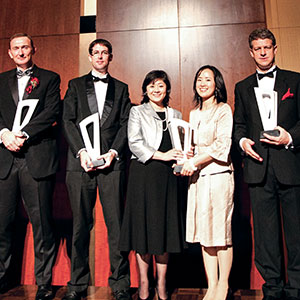It has been five years in the making but finally, on 5 October, the 12 countries involved in the Trans-Pacific Partnership (TPP) came to an agreement designed to deepen economic ties, reduce or even eliminate tariffs and boost growth. Those 12 nations—Australia, Brunei, Canada, Chile, Japan, Malaysia, New Zealand, Peru, Singapore, the US and Vietnam—have a collective population that is roughly twice that of the European single market, and are responsible for about 40% of world trade.
Notably, China is not involved. Some commentators have suggested that the TPP is actually an attempt to reign in Beijing. Certainly it is seen by many as the US trying to boost its influence in the Asia-Pacific region. Yet, Beijing has welcomed the agreement.
At the same time China—along with India—has stepped up its efforts to push forward the Regional Comprehensive Economic Partnership (RCEP), another proposed trade bloc that, if established, would be the biggest in the world. The 16 nations involved account for 3.4bn people. Some commentators have suggested that in the longer term, Beijing’s aim is an even broader pact that would draw TPP into a Free Trade Area of the Asia-Pacific.
That is not so far-fetched an idea. Seven of the 12 nations in the TPP bloc—including Japan—are already members of RCEP. Moreover, Prime Minister Shinzo Abe, who strongly supports the TPP, has suggested that China’s involvement in the future would “increase the pact’s strategic significance and improve regional stability”.
There is, however, a long way to go. Exactly how the TPP will be implemented is unclear, as it still has to be ratified by the legislatures of the participating nations.
In the US, the deal is expected to come before Congress in the middle of the presidential primaries. The outcome is by no means certain, despite President Barack Obama’s strong support for it.
Democratic front-runner Hillary Clinton, for example, promoted White House efforts on the TPP when she was secretary of state but recently came out against the deal in an obvious attempt to court union support for her presidential bid (some critics say the deal will result in increased competition and the loss of US jobs). Currently, none of the declared candidates for the 2016 Democratic ticket support the TPP. Critics say it is difficult to support an agreement that was arrived at in what is seen as a secretive manner.
Abe was quick to hail the TPP as being of great benefit, not just to Japan, but also to the whole region. However, he lost no time in setting up an office that will mitigate the potential negative impact, especially on the nation’s farmers. Government sources say that, should the TPP become reality, about 50% of Japan’s existing tariffs on 834 agricultural products will eventually be abolished. The time frame for the reduction and eventual abolition of agricultural tariffs ranges from six to 13 years.
Powerful lobby groups for agricultural cooperatives nationwide have expressed their concern over the TPP, but opinion polls generally suggest that the majority of voters support the initiative. A recent Kyodo News poll, for example, suggested that 58% of those polled were in favour.
This will no doubt be of some encouragement to Abe, for whom the TPP is important in another sense: that of deepening Japan’s alliance with the US. Together with the recent enactment of security-related bills, there is a sense that closer defence cooperation is a reality.
The TPP has diplomatic and economic consequences, but it is still unclear what Japan really stands to gain and lose.







